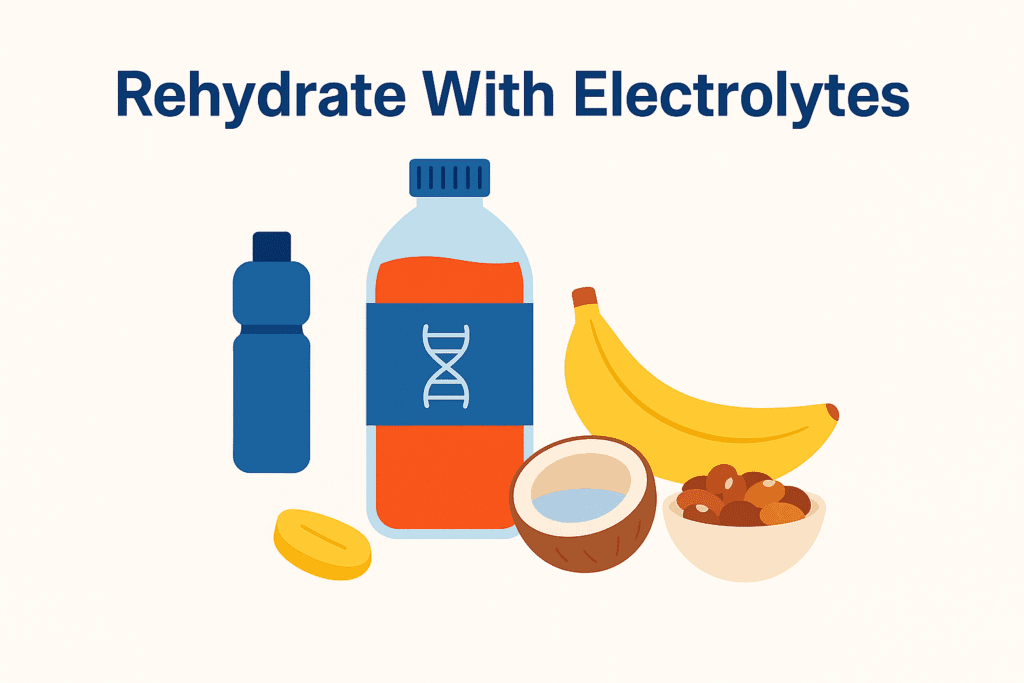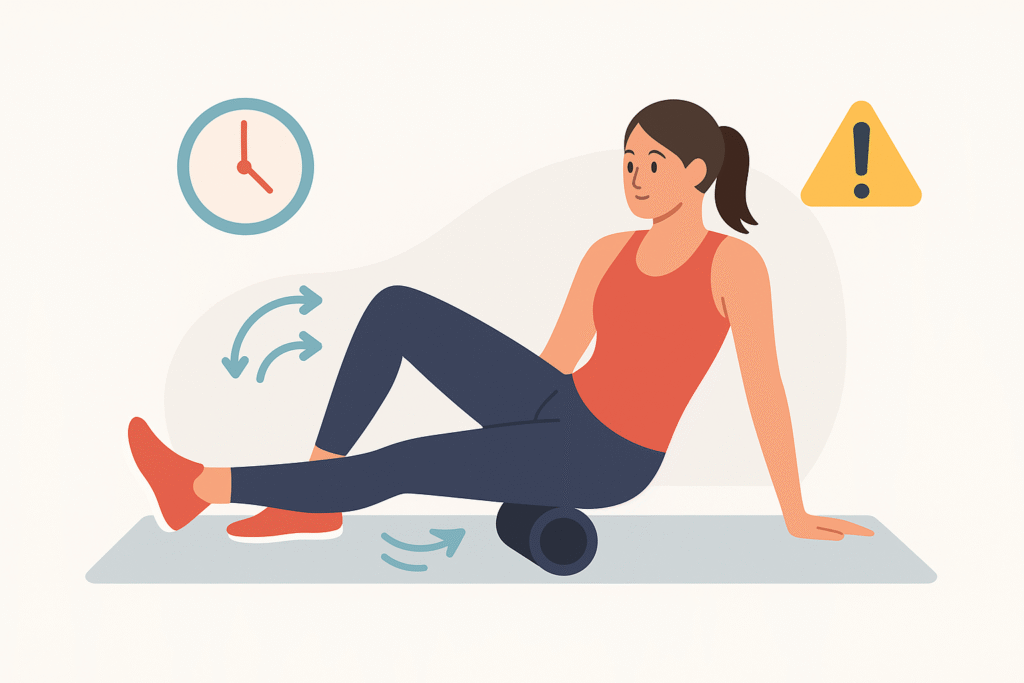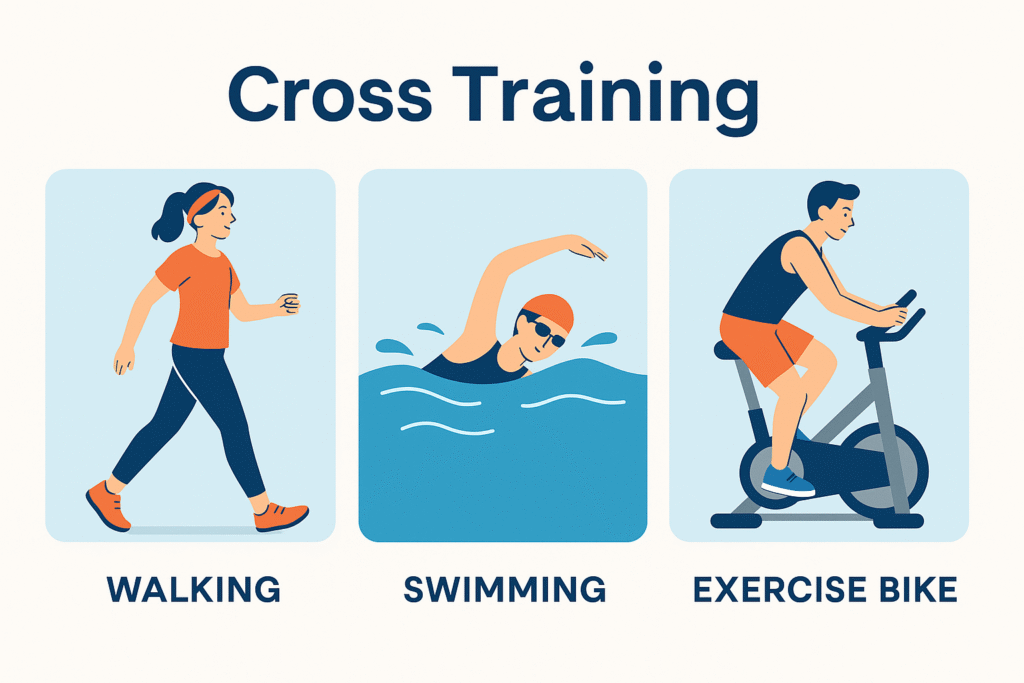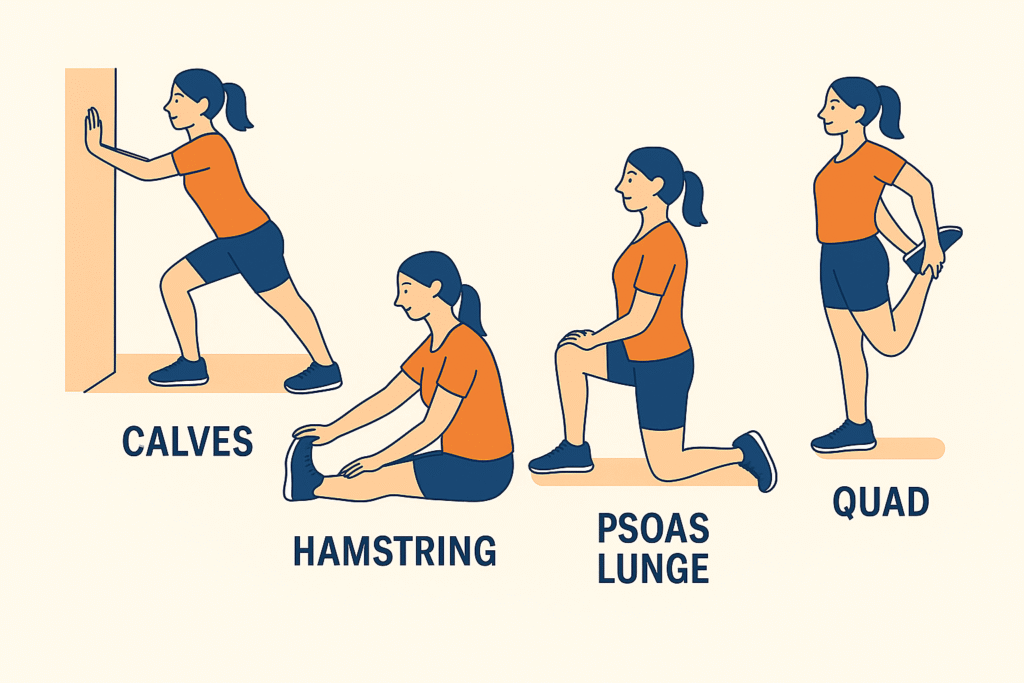
Wish you could bounce back faster, especially if you’ve got a 5K, half marathon, or full race coming up?
Proper recovery isn’t just about avoiding soreness. It’s the key to running stronger, longer, and more consistently. What you do after the finish line affects how well your muscles repair and whether you’re ready for your next workout.
Many beginners feel tight hips after longer runs. While a hip flexor stretch helps, it’s just one part of the recovery puzzle. Knowing what else to do can make a big difference before your next workout.
In this post, you’ll find seven chiropractor-approved recovery tips to ease soreness, repair muscles faster, and get you back to running strong.
Key Takeaways
- Cool down and stretch after your run to reduce soreness and promote blood flow
- Hydrate and refuel with lean protein, complex carbs, and healthy fats (like omega-3s)
- Foam roll and move gently to ease tight muscles and support recovery
- Prioritize sleep — 7 to 9 hours helps the body repair faster
- Try low-impact activity or tools like ice baths, massage, or mobility work to bounce back sooner
7 Chiropractic Tips to Recover Faster
These post-run strategies are grounded in clinical rehab and real-world experience. Use them to reduce soreness, support muscle repair, and feel stronger on your next run.
1. Prioritize a Proper Cool Down
A proper post-run recovery begins with an effective cool down. Slowing your pace to a light jog or walk for 5–10 minutes helps normalize your heart rate and promote blood flow.
Follow this with gentle dynamic stretches, such as leg swings, walking lunges, or hip openers. These movements improve circulation and help minimize muscle cramps. Runners who skip the cooldown often experience more muscle soreness the next day, especially after long runs.
2. Rehydrate With Electrolytes — Not Just Water

Rehydration goes beyond drinking water. Sweating during a long run causes a loss of electrolytes, especially sodium and potassium, which are vital for muscle function and recovery.
Replenish fluids with coconut water, electrolyte-enhanced drinks, or snacks like bananas and salted nuts. Proper hydration helps reduce fatigue and supports muscle repair, especially when combined with a well-balanced post-run meal.
3. Refuel With a Recovery Meal Within 30–60 Minutes
Your muscles are primed to absorb nutrients right after a workout. Eating a balanced recovery meal within 30–60 minutes helps replenish glycogen stores and kickstart muscle repair.
Aim for lean protein, complex carbs like sweet potatoes, and healthy fats. Nutrients like omega-3s have anti-inflammatory properties that support recovery and reduce post-run soreness.
Example meals include:
- A grilled chicken bowl with brown rice, spinach, and avocado
- A smoothie with protein powder, berries, nut butter, and oats
- Baked salmon with sweet potato and sautéed greens
4. Foam Rolling and Mobility Work to Ease Sore Muscles

Foam rolling improves circulation and helps release muscle tension, especially in tight areas like the quads, calves, and hamstrings. Use slow, controlled pressure, since rushing may reduce the benefits.
Chiropractic insight: Soft tissue work like foam rolling is often paired with joint mobility drills in clinical settings to improve recovery outcomes and reduce post-run stiffness.
Follow foam rolling with static stretching to improve flexibility and reduce tightness. Post-run soreness in the feet can often be relieved using a tennis ball, especially if plantar fasciitis is a recurring issue.
5. Try Low-Impact Active Recovery or Cross Training

Recovery doesn’t always mean staying on the couch.
Low-impact activities like walking, swimming, or using an exercise bike can help flush lactic acid and reduce muscle stiffness.
These active recovery options also keep your training routine consistent while giving your joints and muscles time to recover. Cross-training builds strength in supporting muscle groups, thereby lowering your risk of injury over time.
6. Get Seven to Nine Hours of Quality Sleep
Sleep is when the body does most of its repair work. Aim for seven to nine hours of quality sleep each night to reduce fatigue and improve performance.
Good sleep hygiene, such as limiting blue light before bed and sticking to a consistent schedule, can also help you wake up ready for your next workout. Lack of rest can delay muscle recovery and affect mood and motivation.
7. Consider Recovery Enhancements: Ice Baths, Massage, or Cold Water Immersion
After intense training or a long race day, recovery tools like ice baths and cold water immersion can reduce inflammation and muscle soreness. Sports massage can improve circulation and break up tight fascia, promoting faster muscle repair.
These tools aren’t required every week, but they’re especially helpful for long-distance runners or anyone increasing training volume.
Bonus – Don’t Neglect Stretching

Static stretching after a run isn’t just about improving flexibility. It plays a measurable role in post-run recovery. Clinical research and chiropractic rehab protocols consistently recommend stretching after exercise to promote blood flow, reduce muscle tightness, and help prevent delayed-onset muscle soreness (DOMS).
Try this simple post-run stretch routine:
- Standing quad stretch – 20–30 seconds each side
- Calf wall stretch – 20–30 seconds per leg
- Seated hamstring reach – 20–30 seconds
- Hip flexor lunge (psoas stretch) – 20–30 seconds per side
Focus especially on the quads, calves, hamstrings, and hip flexors — these major muscle groups absorb the most impact while running and often tighten up post-run.
Chiropractic Tip on Stretching:
Start with 20–30 seconds per stretch and gradually build up to 1–2 minutes as your body becomes accustomed to it. Longer holds can help improve muscle recovery and flexibility.
But don’t force it. A stretch should feel good, not painful. If you feel sharp pain or a ripping sensation, ease off. That means you’ve gone too far.
Wrap Up
Recovery isn’t something to squeeze in when you have time. It’s part of a complete training routine and just as crucial as your workouts.
By cooling down properly, fueling smart, staying hydrated, and supporting your body with rest and mobility, you’ll bounce back stronger and reduce your risk of injury.
Whether you’re preparing for a half marathon or recovering from your first 5K, these recovery tips can help you run farther, faster, and with fewer setbacks.
FAQ
How long should you rest after a long run?
One day of active recovery or light movement is usually enough for most runners. Total rest may be helpful after longer races like a half or full marathon.
What’s the best food to eat after a run?
Meals with lean protein, complex carbs, and healthy fats—like salmon and sweet potatoes or a smoothie with protein powder—help replenish energy and support muscle repair.
Do ice baths help with recovery?
Yes. Cold water immersion is backed by research for reducing post-exercise soreness and inflammation, especially after intense or long-distance runs.
Dr. Jay Tan is a licensed chiropractor and the founder of TanEMP, where he shares evidence-based recovery strategies and beginner-friendly running tips. As both a healthcare professional and a casual runner, he’s passionate about helping others move better, feel better, and stay consistent with their goals.
For more beginner guidance, check out his post on Tips for Beginner Runners.
Note: This article is based on clinical experience and general educational insights. It is not a substitute for personalized medical advice. Please consult a healthcare provider before starting a new exercise routine or if you’re experiencing pain.

